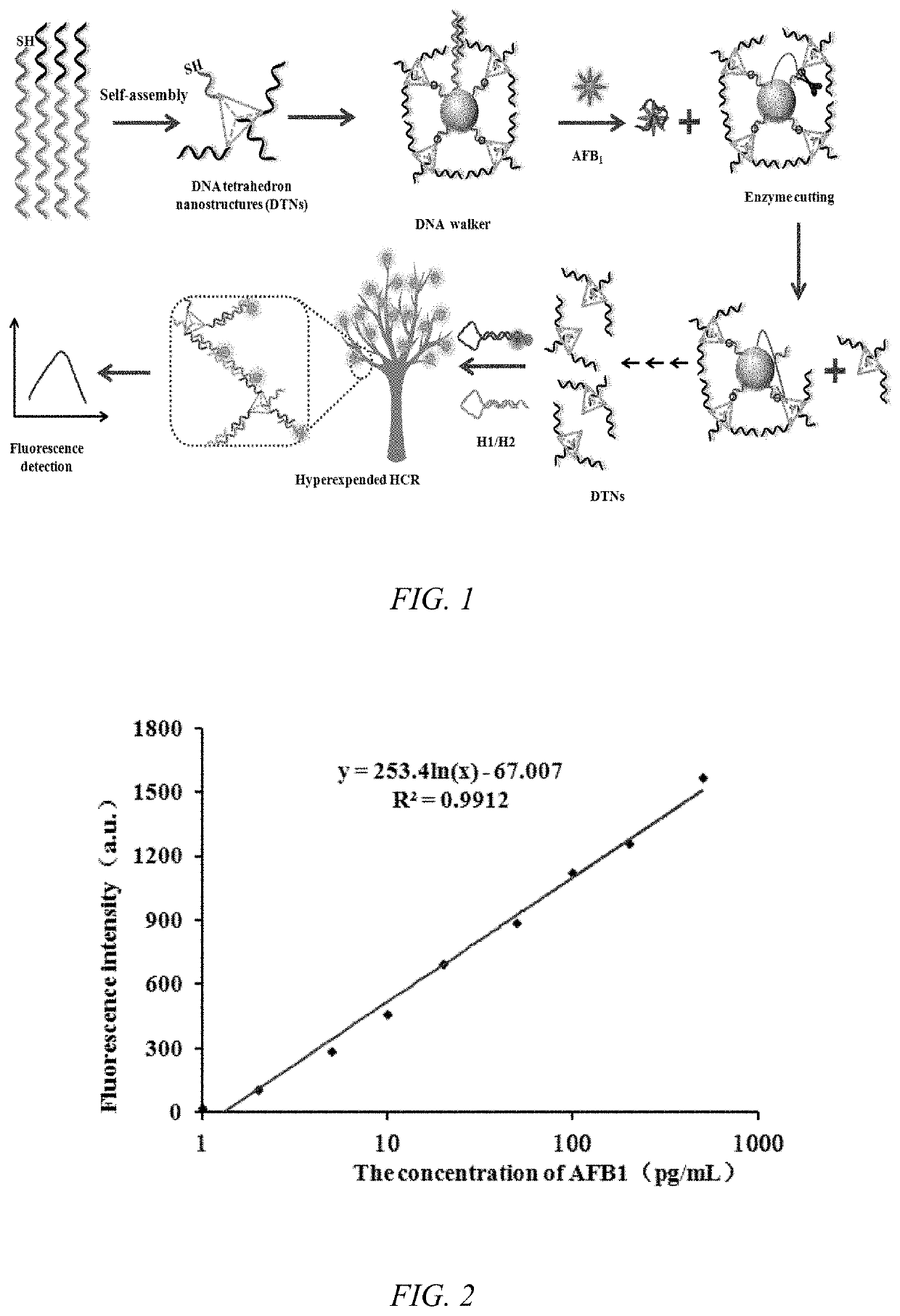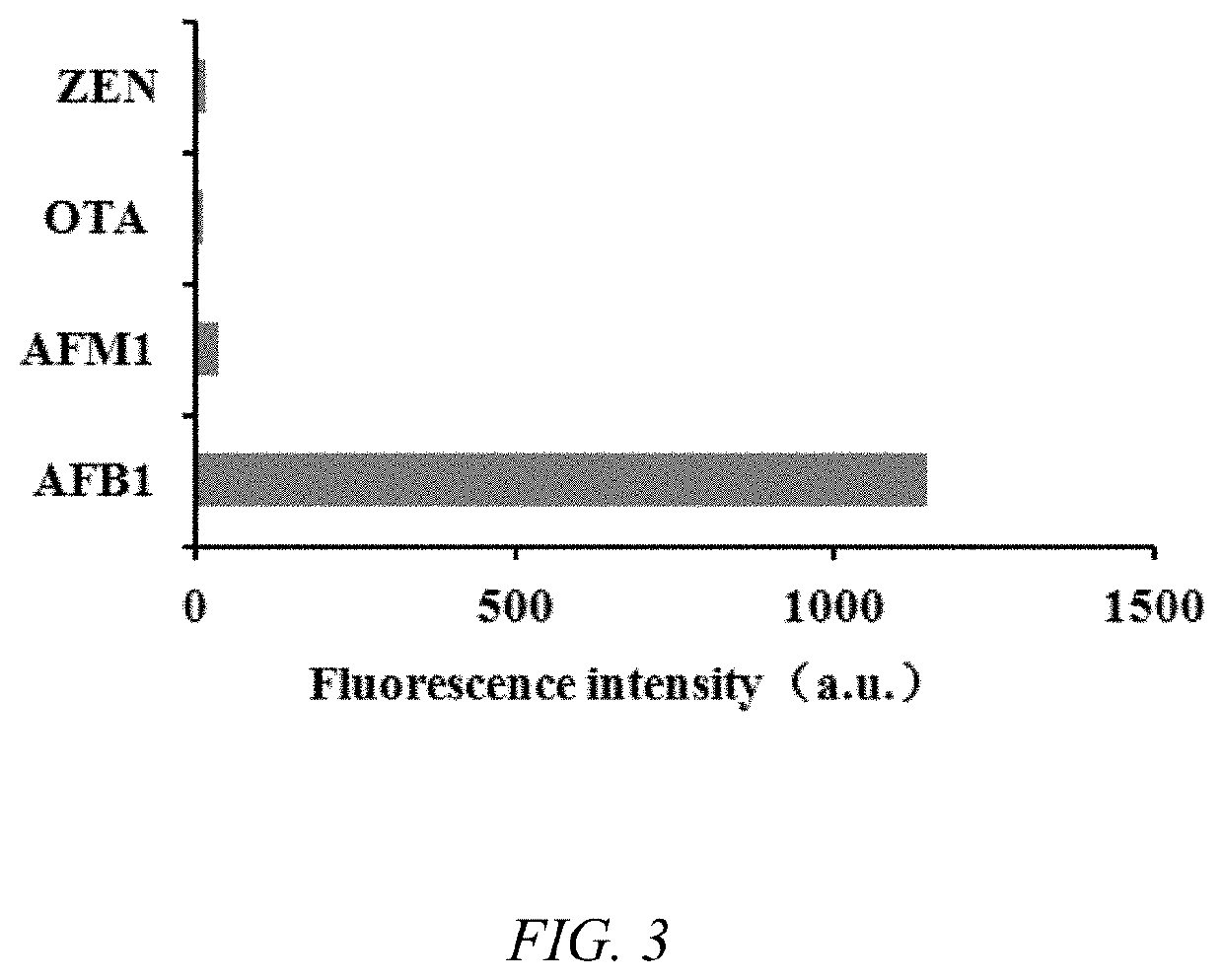Kit for aflatoxin b1 (AFB1) monitoring
a kit and kit technology, applied in the field of aflatoxin b1 detection kit and afb1 detection method, can solve the problems of enzymes involved in the experiment prone to denaturation or inactivation, high equipment and instrumentation costs, and long test tim
- Summary
- Abstract
- Description
- Claims
- Application Information
AI Technical Summary
Benefits of technology
Problems solved by technology
Method used
Image
Examples
embodiment 1
[0040]The detection principle of the invention is as follows:
[0041]DTNs are formed by complementary self-assembly of S1, S2, S3 and S4. There is a single strand extension sequence at the four vertices of DTNs. WA double stranded structure composed of aptamer A of AFB1 and its partially complementary nucleic acid sequence W. The 5 ′end of S1 and W chain were modified by sulfhydryl group. After thiol reduction by TCEP reductant, DTNs and WA were modified on the surface of AuNPs to form DNA Walker structure.
[0042]In the presence of AFB1, aptamer A combined with AFB1 and dissociated from AuNPs with DNA Walker structure. Subsequently, the W chain was in a single chain state and began to swim on the surface of AuNPs driven by base complementation. The binding of E1 on W chain with E2 on S1 forms the recognition site of endonuclease, which triggers the cleavage of S1 chain by endonuclease and makes DTN dissociate from the surface of AuNPs. W would swim to the next binding site until the DT...
embodiment 2
[0054]Method for detecting AFB1 using the kit of embodiment 1:
[0055](1) The sample solution was filtered and diluted 10 times. The 10 μL test sample solution and DNA walker solution were mixed at 37° C. and incubated for 0.5 h. Then the cutting endonuclease Nt.BsmAI was added under 37° C. for 0.5 h. The mixture was kept at 65° C. for 20 min.
[0056](2) Adding sodium chloride solution to the solution after reaction in step (1), the AuNPs is precipitated in the salt solution to retain the supernatant.
[0057](3) H1 and H2 were added to above solution (2) for the reaction at 37° C. for 15 min. The molar ratio of H1 and H2 was 1:1.
[0058](4) The fluorescence intensity of the solution after reaction in step (3) was detected at 490 nm excitation wavelength. The measured fluorescence intensity was introduced into the standard curve.
Sensitivity of the Kit of Embodiment 1
[0059]Different concentrations of AFB1 were used to test the sensitivity of the test kit in embodiment 1 of the present inventi...
PUM
| Property | Measurement | Unit |
|---|---|---|
| Temperature | aaaaa | aaaaa |
| Temperature | aaaaa | aaaaa |
| Temperature | aaaaa | aaaaa |
Abstract
Description
Claims
Application Information
 Login to View More
Login to View More - R&D
- Intellectual Property
- Life Sciences
- Materials
- Tech Scout
- Unparalleled Data Quality
- Higher Quality Content
- 60% Fewer Hallucinations
Browse by: Latest US Patents, China's latest patents, Technical Efficacy Thesaurus, Application Domain, Technology Topic, Popular Technical Reports.
© 2025 PatSnap. All rights reserved.Legal|Privacy policy|Modern Slavery Act Transparency Statement|Sitemap|About US| Contact US: help@patsnap.com


